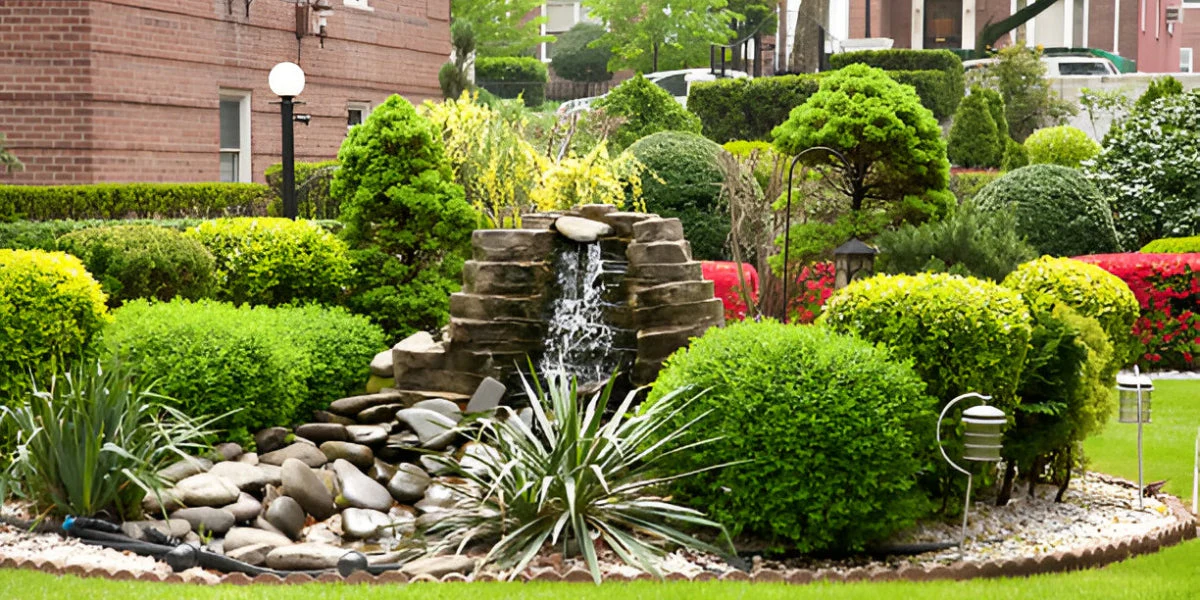
Essential Gardening Tips for a Thriving and Beautiful Outdoor Space in 2025
Gardening is more than just a hobby—it’s a way to create a peaceful, beautiful, and sustainable outdoor space. In 2025, gardening trends are focusing on sustainability, low-maintenance plants, and using innovative techniques to enhance your garden. Whether you’re a beginner or an experienced gardener, these essential tips will help you achieve a thriving garden and a stunning outdoor space.
1. Start with Soil Health: The Foundation of a Thriving Garden
Soil is the most crucial factor in creating a successful garden. Healthy soil supports plant growth by providing nutrients, water retention, and proper drainage. In 2025, gardeners are paying more attention to soil quality, using organic amendments and soil-testing kits to ensure optimal growing conditions.
Tips for Improving Soil Health:
-
Test Your Soil: Use soil test kits like those from Luster Leaf to check pH, nutrient levels, and drainage. Understanding your soil type is key to selecting the right plants.
-
Add Organic Matter: Incorporate compost or well-rotted manure into your soil to improve texture and nutrient content. Organic matter enhances soil structure and promotes beneficial microbial activity.
-
Use Mulch: Mulch helps conserve moisture, suppress weeds, and add organic matter to your soil. Use organic mulches like bark, straw, or grass clippings.
Why It’s Essential:
-
Better Plant Growth: Healthy soil supports robust plant growth by providing essential nutrients and a stable environment.
-
Sustainability: Healthy soil helps reduce the need for chemical fertilizers and pesticides, making your gardening practices more eco-friendly.
2. Choose the Right Plants for Your Climate and Space
In 2025, gardeners are focusing on planting species that are suited to their local climate and require minimal maintenance. Native plants, drought-resistant varieties, and perennials are popular choices because they thrive naturally in your environment.
Tips for Selecting the Right Plants:
-
Know Your Zone: Research your USDA hardiness zone to determine which plants will grow best in your area. Plants suited to your climate are less likely to require intensive care.
-
Go Native: Native plants like echinacea, black-eyed Susan, or lupine attract local wildlife and require less water and fertilizer. They are also more resistant to pests and diseases.
-
Consider Drought-Tolerant Plants: For water conservation, consider planting drought-tolerant species like succulents, lavender, or agave, which thrive in dry conditions.
Why It’s Essential:
-
Sustainability: Choosing the right plants reduces the need for constant watering and maintenance, saving time and resources.
-
Wildlife-Friendly: Native plants create a welcoming environment for pollinators like bees and butterflies, supporting local ecosystems.
3. Water Wisely: Efficient Irrigation Techniques
Watering is a key aspect of maintaining a beautiful garden, but in 2025, gardeners are focusing on efficient irrigation techniques to save water and reduce costs. Using modern irrigation systems, such as drip irrigation, ensures that water reaches the roots of your plants where it’s needed most.
Tips for Watering Efficiently:
-
Install Drip Irrigation: Drip systems deliver water directly to the plant roots, reducing waste and minimizing evaporation. This is ideal for gardens, especially during hot months.
-
Water Early or Late in the Day: Watering early in the morning or late in the evening helps reduce evaporation, allowing the plants to absorb water efficiently.
-
Use Rain Barrels: Collect rainwater to water your garden. Using rainwater helps reduce reliance on tap water, making it an eco-friendly solution for irrigation.
Why It’s Essential:
-
Water Conservation: Efficient watering methods reduce water waste, conserving this precious resource and lowering your utility bills.
-
Improved Plant Health: Proper watering ensures plants receive enough moisture without the risk of over-watering, which can lead to root rot.
4. Prune and Deadhead Regularly for Healthy Growth
Pruning and deadheading are essential practices for keeping plants healthy, encouraging new growth, and improving the overall appearance of your garden. By removing dead or damaged parts, you help plants focus energy on producing fresh growth.
Pruning Tips:
-
Cut at the Right Time: Prune deciduous shrubs and trees in late winter or early spring before new growth starts. Flowering plants like roses benefit from pruning after their blooms fade.
-
Deadhead Flowers: Regularly remove spent flowers from plants like petunias and marigolds to encourage more blooms and extend the flowering period.
-
Clean Pruning Tools: Use sharp, clean tools to avoid damaging plants and spreading diseases. Clean your pruning shears with rubbing alcohol between cuts.
Why It’s Essential:
-
Promotes Healthy Growth: Pruning helps shape plants, remove diseased parts, and stimulate new growth, leading to healthier, more vigorous plants.
-
Aesthetic Appeal: Regular pruning keeps your garden looking tidy, vibrant, and well-maintained.
5. Incorporate Companion Planting for Pest Control
In 2025, gardeners are increasingly using companion planting to naturally repel pests and promote plant health. Certain plants have beneficial relationships when planted together, either deterring pests or improving growth.
Companion Planting Tips:
-
Marigolds and Tomatoes: Marigolds naturally repel pests like aphids and nematodes, making them a great companion for tomatoes.
-
Basil and Peppers: Basil enhances the growth of peppers and deters insects like mosquitoes and flies.
-
Nasturtiums and Cucumbers: Nasturtiums attract aphids away from cucumbers and act as a trap crop, keeping pests off your main vegetables.
Why It’s Essential:
-
Natural Pest Control: Companion planting reduces the need for harmful pesticides, creating a healthier garden environment.
-
Improved Plant Health: Plants that thrive together support each other, improving the overall health of your garden.
6. Create Garden Layers for Visual Appeal and Function
In 2025, layering plants in your garden for both aesthetic and functional purposes has become a key design principle. Creating multiple levels of greenery—using groundcovers, shrubs, and trees—adds dimension and visual interest.
Tips for Layering Your Garden:
-
Use Ground Covers: Plant low-growing ground covers like creeping thyme or ivy to fill empty spaces and prevent weeds.
-
Vary Heights: Combine short, medium, and tall plants to create a dynamic visual effect. Plant taller varieties at the back and shorter ones in front to ensure all plants are visible.
-
Mix Evergreen and Deciduous Plants: Evergreens provide year-round interest, while deciduous plants offer seasonal variety, making your garden visually exciting through the year.
Why It’s Essential:
-
Visual Appeal: Layering adds depth and interest to your garden, making it more attractive and engaging.
-
Maximizing Space: Layering allows you to make the most of your garden space, fitting more plants into small or medium-sized areas.
7. Embrace Vertical Gardening for Small Spaces
For those with limited space, vertical gardening is a growing trend. By using walls, fences, or trellises, you can grow climbing plants, vegetables, and flowers without taking up valuable ground space.
Vertical Gardening Tips:
-
Use Trellises for Vines: Grow climbing plants like tomatoes, cucumbers, and peas on vertical supports such as trellises or cages.
-
Wall Planters: Install planters or pocket systems on fences or walls to grow herbs, flowers, or small vegetables.
-
Vertical Flower Gardens: Create multi-level flower arrangements by stacking or arranging pots and containers on shelves or racks.
Why It’s Essential:
-
Space-Efficiency: Vertical gardening is perfect for urban areas or small yards where horizontal space is limited.
-
Aesthetic and Functional: Vertical gardens not only enhance your home’s appearance but can also produce fresh herbs and vegetables right at your doorstep.
Conclusion: Cultivate Your Dream Garden in 2025
Gardening in 2025 is about more than just aesthetics; it’s about creating a sustainable, functional, and beautiful space that enhances your lifestyle. By focusing on soil health, choosing the right plants, and implementing efficient gardening practices like companion planting and vertical gardening, you can cultivate a thriving garden that suits both your needs and your style. Whether you’re a seasoned gardener or just starting, these essential tips and techniques will help you grow a beautiful outdoor space while making the most of your time, effort, and resources.


